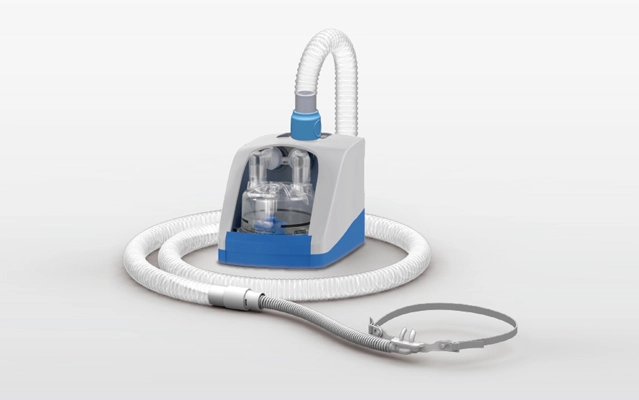With the continuous advancement of medical technology, the clinical application of high-flow nasal cannula (HFNC) technology in China is gradually expanding, and its development trends are becoming increasingly evident. As a novel respiratory support device, the high-flow nasal cannula plays a crucial role in the treatment of respiratory system diseases due to its unique advantages. This article delves into the development trends of high-flow nasal cannula in China.
Accelerated Technological Innovation and Upgrades
The development of high-flow nasal cannula China is first reflected in technological innovation and upgrades. With the progress in materials science and improvements in manufacturing processes, the design of high-flow nasal cannulas has become more user-friendly, and their use has become more convenient. Simultaneously, significant progress has been made in new high-flow nasal cannulas concerning oxygen concentration adjustment, flow control, humidification effectiveness, providing patients with more comfortable and efficient respiratory support.
Furthermore, the trend towards intelligent and automated technologies is also evident in the field of high-flow nasal cannulas. In the future, we can expect the emergence of high-flow nasal cannula in China products with intelligent regulation, automatic alarms, and other functions, further enhancing the effectiveness of treating respiratory system diseases.
Continuous Expansion of Clinical Applications
As high-flow nasal cannula in China continues to evolve, its clinical applications are continually expanding. Currently, high-flow nasal cannulas are widely used in the treatment of respiratory system diseases such as neonatal respiratory distress syndrome, respiratory pauses in premature infants, and pediatric pneumonia. In the future, with further technological improvements and accumulated clinical experience, high-flow nasal cannulas are expected to play a more significant role in treating respiratory system diseases in adults.
Simultaneously, high-flow nasal cannulas can be integrated with other medical devices and technologies to form a multi-modal, multi-level respiratory support system. For example, high-flow nasal cannulas can be combined with non-invasive ventilation, mechanical ventilation, and other technologies to provide patients with more comprehensive and personalized treatment plans.
Development of Personalized Treatment and Precision Medicine
As the concept of precision medicine becomes more widespread, the development of high-flow nasal cannula technology is also moving towards personalized treatment. In the future, high-flow nasal cannulas will pay more attention to individual differences and patient needs, achieving personalized respiratory support through precise adjustment of parameters such as oxygen concentration and flow.
Moreover, precision medicine based on big data and artificial intelligence will provide robust support for the development of high-flow nasal cannula technology. Through the analysis and exploration of a large amount of clinical data, we can better understand the treatment effectiveness and safety of high-flow nasal cannulas in different patient groups, providing a scientific basis for formulating personalized treatment plans.
Rise of Domestic Equipment and Enhancement of International Competitiveness
In recent years, with the rapid development of domestic medical technology and the improvement of innovation capabilities, domestic high-flow nasal cannula devices have gradually gained prominence. An increasing number of domestic companies have entered the high-flow nasal cannula field, introducing a series of products with independent intellectual property rights.
These domestically-produced high-flow nasal cannula devices have certain competitive advantages in terms of performance, quality, and price, gradually occupying a place in the domestic market. Meanwhile, as domestic companies continue to increase research and development efforts and improve technical proficiency, the international competitiveness of domestically-produced high-flow nasal cannula devices is expected to gradually rise, potentially achieving greater breakthroughs in the international market.
In conclusion, the development trends of high-flow nasal cannula in China demonstrate characteristics such as accelerated technological innovation and upgrades, continuous expansion of clinical applications, the development of personalized treatment and precision medicine, and the rise of domestic equipment with enhanced international competitiveness. In the future, we can expect high-flow nasal cannula technology to play a more crucial role in the treatment of respiratory system diseases, bringing relief to a broader range of patients.
 English
English










